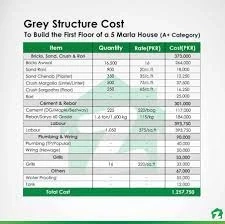The Grey Structure Cost: Understanding the Foundation
Introduction:When embarking on a construction project, understanding the various costs involved is essential for effective planning and budgeting. One crucial aspect that significantly ...


Introduction:When embarking on a construction project, understanding the various costs involved is essential for effective planning and budgeting. One crucial aspect that significantly ...

